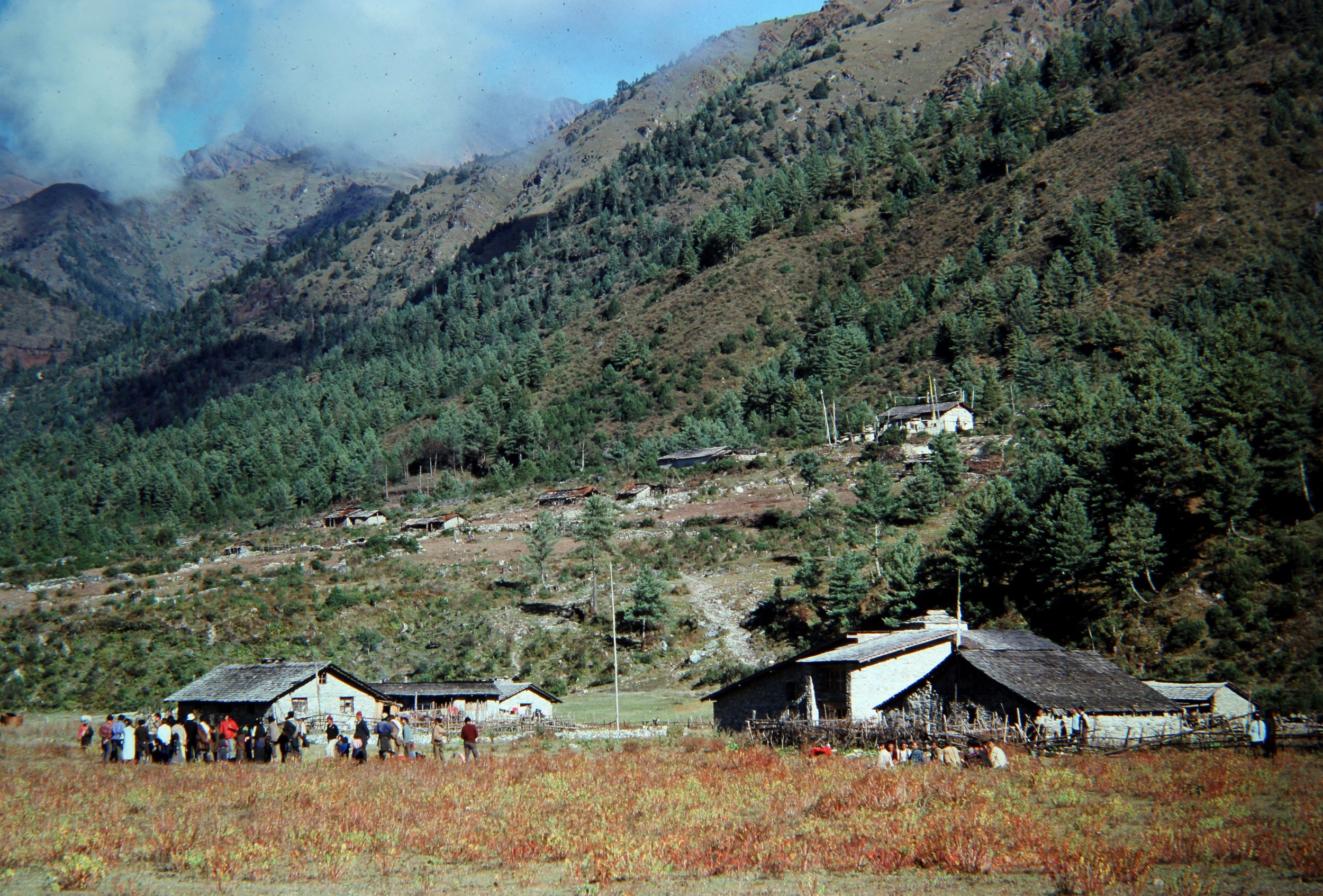Scenes from the book.
Innovation by necessity.
Nepal had high rates of tuberculosis and leprosy. Bacterial identification required the examination of sputum and skin samples. We had a microscope that used a mirror as a light source, so we found that the best place for doing microscope work was outside in the bright sunlight. We placed the microscope on a wooden box, using its mirror to aim sunlight at the specimen. Here, Mary peers through the microscope outside the clinic while patients wait.
Working Together.
Our trusted partner and core staff member, Pema Gyaltsen (left), assists patients at the Dhorpatan clinic as a trained medical assistant. Pema offered crucial insights into our community, helping us adapt our strategies to meet the diverse needs and religious and cultural preferences of Tibetans and Nepalis.
Community Health Workers Join the Team.
Local community members were trained in health education, outreach, and interventions. They conducted home visits with villagers and health workers to discuss needs in agriculture, animal husbandry, and health. Health workers were trained to evaluate common health problems, provide home care guidance, and make timely clinic referrals. For two years, we provided training to seven health workers on various outreach strategies, like demonstrations, storytelling, and use of pictures. Health workers created culturally sensitive communication and teaching strategies, which accommodated diverse languages, beliefs, and other aspects.
Above: Looking northeast to the upper left is Dhaulagiri. The Annapurna Range is farther off to the right. The clinic sits in lower left of the valley floor
The Dhorpatan Health Project Becomes a Reality
The project, which was conceived and designed by Ross Anthony, became a reality after a local Nepali philanthropic organization agreed to co-sponsor the project, and funding, a site, staff, and Nepali government approval were all secured. After a temporary delay because of political problems between Nepal and Tibet, Ross and Mary trekked for a week to Dhorpatan and Stephen flew in with essential medical supplies, making the Dhorpatan Health Project a reality.
Ross Anthony oversaw the project, handled fund raising, and managed agriculture development. Stephen Bezruchka, a physician from Canada with substantial experience and enthusiasm for Nepal, became the doctor and medical director. Mary Murphy, a Peace Corps volunteer, took charge of public health and community outreach. Later, Mike Payne, a former Peace Corps volunteer with experience building water systems, joined the team and led design and construction of capital projects. Pema Gyaltsen, a trained medical assistant who was running the clinic alone, joined the team (see above). Finally, five local Nepalis joined us to be trained as health aides.

The authors’ life journeys converge in Dhorpatan.
“It was a huge challenge, but we were young, energetic and determined dreamers,” —Ross Anthony
Mary Murphy about to embark on a trek to the “Under Fives” clinic
Ross Anthony selling vegetable seeds to a farmer
Stephen Bezruchka with donkeys at the clinic entrance
Mike Payne consulting with villagers on the design of the new water system







